In today’s fast-paced world, staying organized can feel like a daunting task. You might find yourself drowning in a sea of fabric scraps, bags, and accessories. That’s why I put together this post—because a little creativity can go a long way in transforming your clutter into chic organization. If you’re someone who values a tidy space without sacrificing style, then you’re in the right place.
This collection of 30+ fabric storage ideas is designed for anyone looking to bring order to their home while embracing eco-friendly practices. Whether you’re an avid crafter, a busy parent, or just someone who enjoys a neat home, these ideas will inspire you to rethink your storage solutions. You care about your surroundings, and you want them to reflect your personal style, all while being kind to the planet.
What can you expect from this article? You’ll discover a range of stylish storage solutions that not only help you declutter but also enhance your home’s decor. From reusable fabric grocery bags to colorful fabric folders for documents, each idea is practical and chic. By the end, you’ll have a toolkit of innovative fabric storage bins and accessories that suit your needs and tastes. Say goodbye to chaos and hello to a beautifully organized and stylish home!
Key Takeaways
– Explore over 30 eco-friendly fabric storage ideas tailored to different needs, such as crafting, laundry, and nursery organization.
– Discover stylish fabric storage bins and baskets that keep your belongings neat while adding a decorative touch to your space.
– Unleash your creativity with DIY fabric drawstring bags and upcycled fabric shelves, perfect for a personal touch in your home.
– Learn practical storage solutions for challenging areas like under-bed spaces and shoe organizers to maximize your home’s potential.
– Implement easy decluttering strategies that transform clutter into chic home accessories, making your space both functional and fashionable.
1. Stylish Fabric Storage Bins

Fabric storage bins are essential for a tidy home. They come in a variety of shapes and colors, adding a stylish touch to any room. For instance, soft cotton bins in pastel colors can create a calming vibe, while bold patterns can inject energy into your space. Pinterest showcases many ideas on how to use these bins effectively, making them a trendy choice for modern decor. When choosing your bins, think about size and material. Look for breathable fabrics that are easy to clean, like cotton or jute. Stackable bins are great for saving space, and some even come with label holders for easy organization. With these stylish bins, you’ll not only eliminate clutter but also enhance the aesthetic of your home, making it feel more inviting. • Choose natural materials like cotton or jute for charm
• Pick soft colors for a calming atmosphere
• Ensure stackability to save space
• Add label holders for easy identification
With stylish fabric storage bins, you can achieve a clutter-free and chic home environment.
Stylish Fabric Storage Bins
Editor’s Choice

NaturalCozy 11.8″x8″x4.5” Storage Baskets for Shelves 3 Pack | Cotton Ro…
 Amazon$25.99
Amazon$25.99
BINO Woven Plastic Basket | Large (Natural), 3-Pack | THE JUTE COLLECTIO…
 Amazon$31.99
Amazon$31.99![30+ Fabric Storage Ideas to Keep Your Home Organized and Chic 6 Univivi Fabric Foldable Storage Boxes [4-Pack] Large Collapsible Stackab...](https://m.media-amazon.com/images/I/81hypT2xO9L._AC_UL320_.jpg)
Univivi Fabric Foldable Storage Boxes [4-Pack] Large Collapsible Stackab…
 Amazon$36.99
Amazon$36.992. Reusable Fabric Grocery Bags
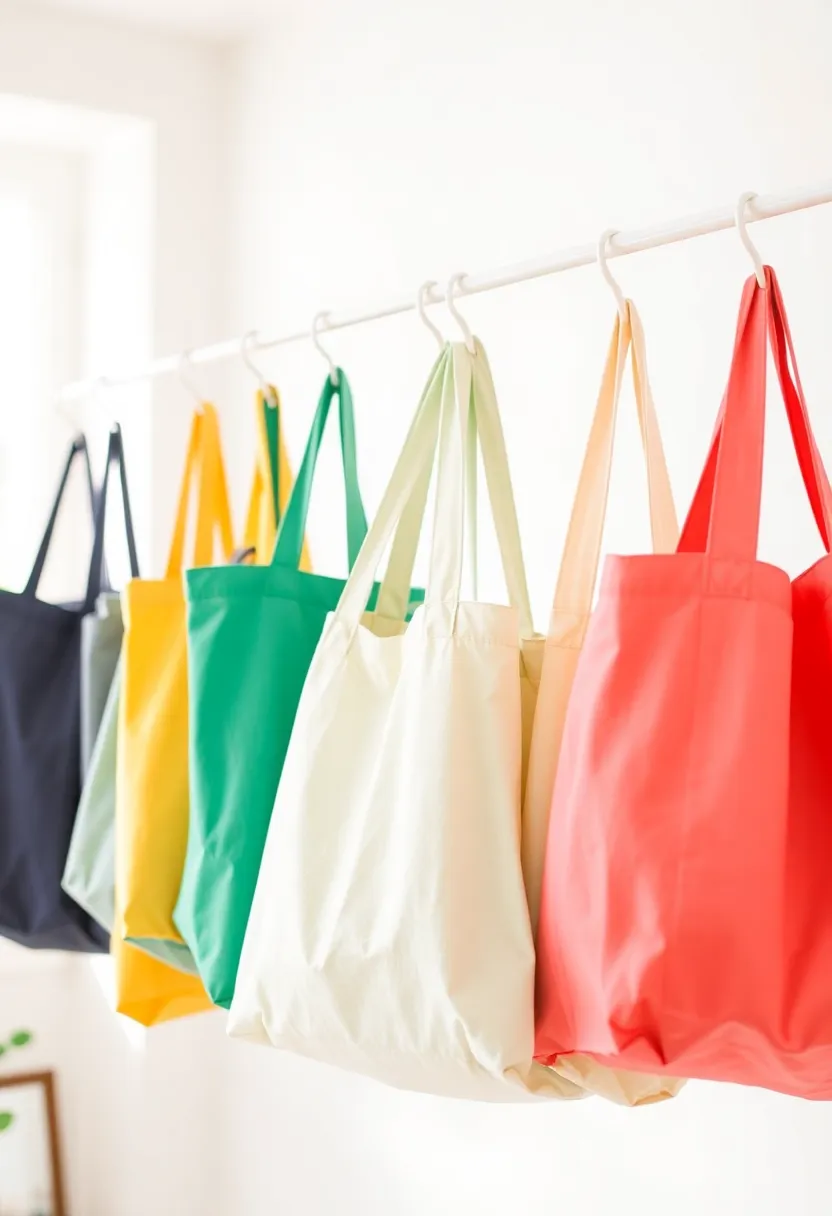
Have you thought about repurposing your reusable grocery bags? These sturdy bags can serve as stylish storage solutions at home! They come in various sizes and colors, making them a great match for your decor. You can use them for organizing kids’ toys, craft supplies, or even out-of-season clothing. Many design blogs highlight creative ways to use these bags around the house. For practical use, hang these bags on hooks for easy access in your craft corner. Use them in playrooms to keep toys tidy and make clean-up a breeze. You can also store seasonal clothes in decorative bags, neatly tucked under beds or in closets. This simple approach not only declutters but also promotes eco-friendliness by reusing what you already own. • Use bags for craft supplies in a designated area
• Organize toys in fun patterned bags
• Store seasonal clothing in decorative bags
• Hang bags on hooks for easy access
This way, you can keep your home organized while being kind to the environment.
Reusable Fabric Grocery Bags
Editor’s Choice

BeeGreen Reusable-Grocery-Bags-Foldable-Machine-Washable-Reusable-Shoppi…
 Amazon$21.99
Amazon$21.99
8 Pack S Hooks for Hanging, 3.5 inch Heavy Duty Metal S Hooks with Safet…
 Amazon$5.99
Amazon$5.99
Amazon Basics Collapsible Fabric Storage Cubes Organizer with Handles, S…
 Amazon$17.29
Amazon$17.293. DIY Fabric Drawstring Bags

Making your own fabric drawstring bags is a fun and creative project. These bags are perfect for organizing various items while adding your personal touch. You can choose fabrics, colors, and patterns that reflect your style. Use them for storing linens, shoes, accessories, or toys, keeping everything sorted and easy to find. Many DIY enthusiasts showcase their creations online, providing inspiration for your own designs. To create your bags, simply cut your chosen fabric, sew the edges, and add a drawstring. This project is budget-friendly and eco-conscious, allowing you to customize storage solutions that fit your needs. Making these bags brings a sense of accomplishment while enhancing your home’s organization. • Pick your favorite fabrics for unique designs
• Use drawstring bags for easy access
• Store toys, shoes, or accessories in them
• Craft them yourself for a personal touch
Creating DIY fabric drawstring bags is a rewarding way to enhance your home organization.
DIY Fabric Drawstring Bags
Editor’s Choice

Brother XM2701 Sewing Machine, Lightweight, Full Featured, 27 Stitches, …
 Amazon$129.99
Amazon$129.99
Fabric Scissors Professional, 8″ Heavy Duty Sewing Scissor for Fabric Cu…
 Amazon$9.89
Amazon$9.89
Mandala Crafts White Flat Drawstring Cord Drawstring Replacement, 3/8 In…
 Amazon$11.99
Amazon$11.994. Upcycled Fabric Shelves
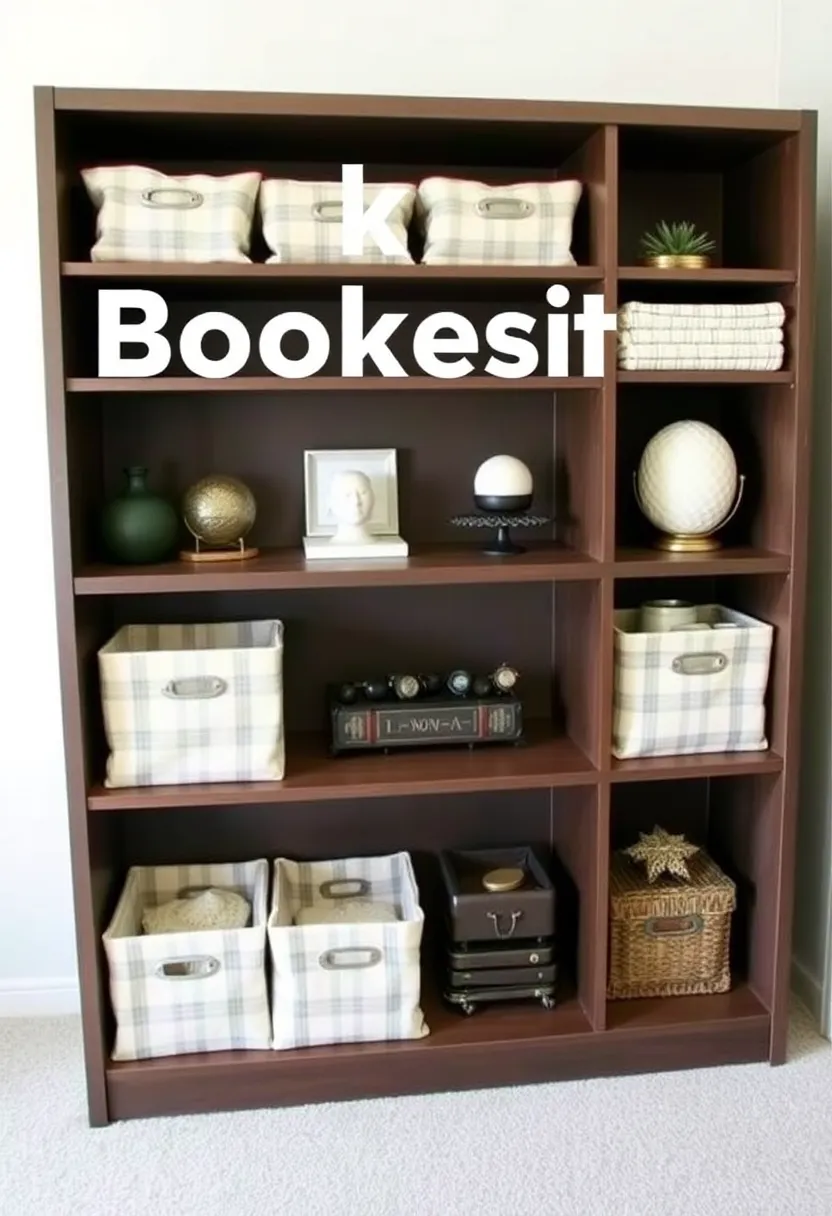
Transform an old bookshelf into something beautiful with upcycled fabric! By covering shelves with lovely fabric, you can add warmth and character to any room. This simple update not only beautifies your shelves but also protects your belongings from dust and scratches. Many DIY bloggers share their techniques online, inspiring you to take on this project. Choose fabric that complements your decor style, whether it’s floral for a vintage feel or bold prints for a modern look. Secure the fabric with adhesive spray to ensure a smooth finish. Pair with decorative bins to store items, creating a cohesive look that enhances your space. This creative method not only elevates your home’s design but also promotes sustainable practices. • Select fabric that matches your decor
• Secure it with fabric adhesive spray
• Pair with decorative bins for storage
• Add warmth and character to your shelves
Upcycled fabric shelves can certainly refresh your home’s aesthetic while keeping it organized.
Upcycled Fabric Shelves
Editor’s Choice

Amazon Basics Foldable Storage Bins with Rope Handles, Linen, Large, Pac…
 Amazon$11.62
Amazon$11.62
5. Fabric-Covered Storage Ottomans
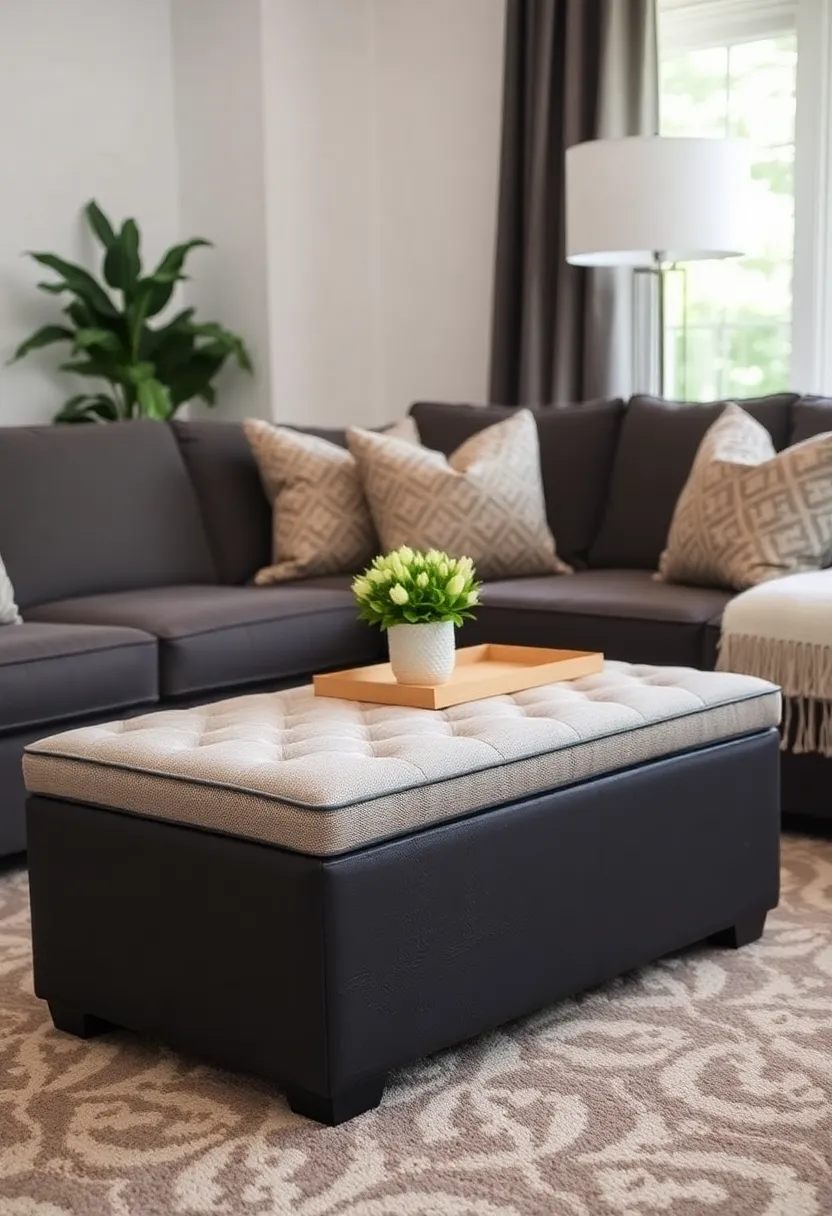
Fabric-covered storage ottomans are a fantastic blend of style and function. These versatile pieces can store items while providing extra seating in your living space. Available in various fabrics and colors, they can easily match your decor. Use them to store blankets, board games, or even out-of-season clothes, adding a chic touch to your interior. Many home decor magazines showcase these ottomans as a stylish storage solution. When selecting or creating an ottoman, ensure the fabric is durable and easy to clean. The right choice can make your ottoman a focal point in the room while keeping everything neatly tucked away. This approach not only maximizes style but also enhances functionality in your living area. • Choose durable fabrics for longevity
• Use in living rooms, bedrooms, or playrooms
• Store toys or clothes in a stylish manner
• Ensure functionality and charm in your space
These ottomans can help you create a stylish and organized home that welcomes everyone.
Fabric-Covered Storage Ottomans
Editor’s Choice

Lifetime Home 43″ Folding Storage Ottoman Bench for Living Room, Bedroom…
 Amazon$37.75
Amazon$37.75
BOURINA Beige Throw Blanket 50×60 Inches Throw Textured Solid Soft Sofa …
 Amazon$18.98
Amazon$18.986. Fabric Wall Organizers

Maximize your wall space with fabric wall organizers that are both functional and stylish. These organizers can hold everything from craft supplies to accessories, helping you keep your home tidy. They come in various designs, from simple pockets to elaborate hanging systems, making them versatile for any room. Home organization blogs frequently highlight these as a great way to declutter your space. Use them in entryways to store keys and mail, or hang them in kids’ rooms for toys and craft supplies at their height. Opt for eco-friendly materials to ensure your choices are sustainable. With these organizers, you’ll keep essential items within reach while adding a decorative touch to your walls. • Hang in entryways for mail and keys
• Use in kids’ rooms for toys and crafts
• Choose eco-friendly materials for sustainability
• Create stylish storage solutions for any room
Fabric wall organizers can enhance your home’s organization while adding a fun layer to your decor.
Fabric Wall Organizers
Editor’s Choice

Co-link Linen/Cotton Fabric Wall Door Cloth Hanging Storage Pockets Book…
 Amazon$12.75
Amazon$12.75
IRIS USA WeatherPro 74 Qt Eco-Friendly Storage Bins with Lids, 4 Pack, B…
 Amazon$116.99
Amazon$116.99
Hanging Closet Organizer 4 Tier – Clothes Hanging Shelves, Space-Saving …
 Amazon$29.99
Amazon$29.997. Vintage Suitcases for Fabric Storage
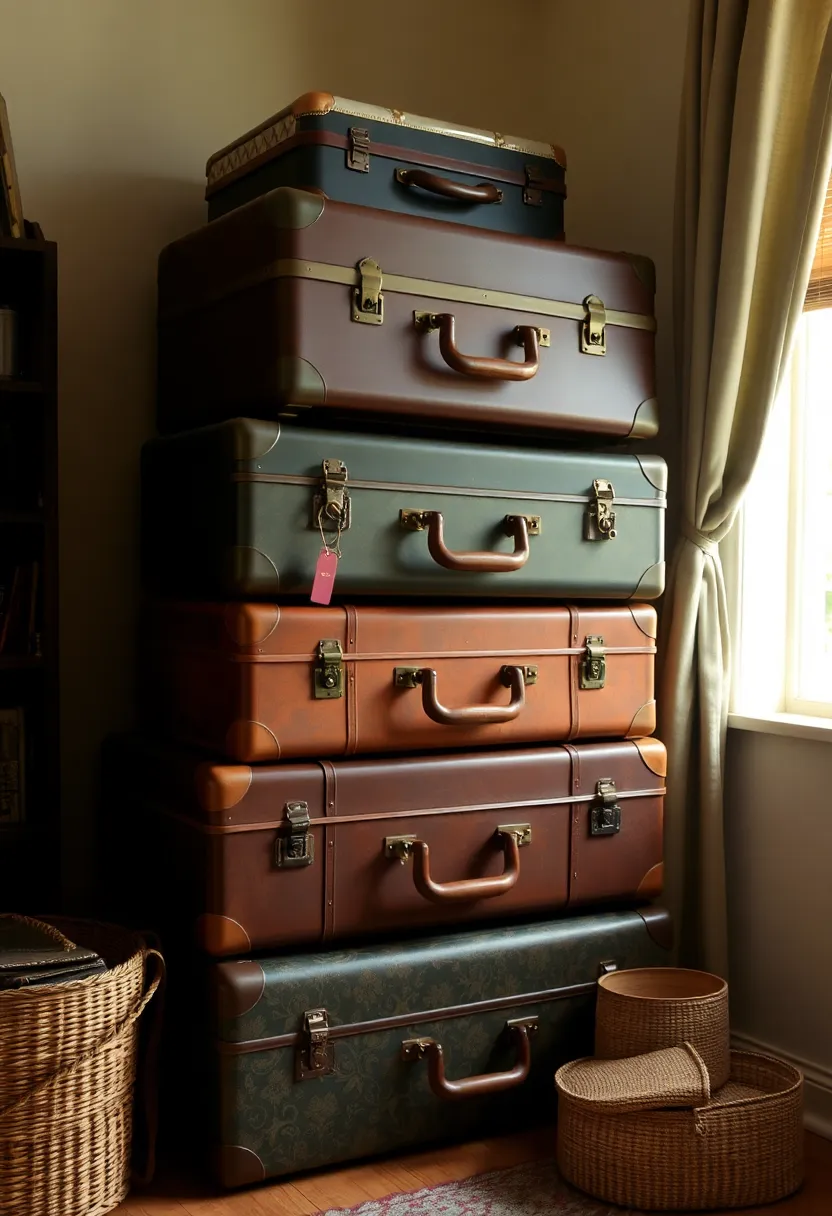
Vintage suitcases can bring a nostalgic touch to your home organization. These charming storage options are not only functional but also add character to your decor. Use them to store seasonal clothing, bedding, or crafting supplies, showcasing their beautiful designs. Many home decor enthusiasts love to stack them for a boho vibe, which is a popular trend right now. You can display them individually or as a stacked collection in various corners of your space. Vintage suitcases promote reusability and sustainability while enhancing your home’s style. They are perfect for keeping your belongings organized and visually appealing. • Use for seasonal clothing and linens
• Store craft supplies while showcasing design
• Stack for a boho vibe in your decor
• Display individually or in collections
Vintage suitcases are a chic and eco-friendly way to keep your home organized.
Vintage Suitcases for Fabric Storage
Editor’s Choice

Large Capacity Vintage Luggage Set With TSA Lock, Luxury Vintage Style M…
 Amazon$422.10
Amazon$422.10
Amazon Basics Collapsible Fabric Storage Cubes Organizer with Handles, S…
 Amazon$17.29
Amazon$17.29
BTSKY 3-Layer Plastic Dividing Storage Craft Organizer with Adjustable S…
 Amazon$19.99
Amazon$19.998. Fabric Baskets for Laundry and More

Fabric baskets are a stylish and practical solution for organization. They can serve various purposes beyond just laundry—get creative! Use them to store kids’ toys, cozy blankets, or craft projects. With a variety of colors and textures available, you can easily find options that complement your home decor. Many design blogs feature fabric baskets as must-have items for a well-organized home. Choose lightweight baskets that can be moved easily from room to room. They’re perfect for adding a touch of style while keeping your spaces tidy. This practical approach helps maintain an organized environment while enhancing your interior design. • Use for toys in playrooms for easy access
• Store blankets for cozy nights
• Organize ongoing craft projects
• Select colors and textures that fit your style
With fabric baskets, you can keep your home stylishly organized and clutter-free.
Fabric Baskets for Laundry and More
Editor’s Choice

OIAHOMY Large Blanket Basket, 22”x17”x12” Rectangle Woven Baskets, Nurse…
 Amazon$24.99
Amazon$24.99![30+ Fabric Storage Ideas to Keep Your Home Organized and Chic 49 Fab totes Storage Bins [3-Pack], Foldable Storage Baskets for Organizing...](https://m.media-amazon.com/images/I/81shZ8i+y+L._AC_UL320_.jpg)
Fab totes Storage Bins [3-Pack], Foldable Storage Baskets for Organizing…
 Amazon$13.29
Amazon$13.299. Foldable Fabric Cubes

Foldable fabric cubes are champions of space-saving storage! These versatile organizers help you keep everything neat and tidy, especially in smaller spaces. When not in use, simply fold them away for easy storage. You can use them to hold craft supplies, shoes, or office supplies, making them perfect for any room. Many online retailers highlight these cubes as practical solutions for organization. Look for eco-friendly options made from recycled materials to support sustainability. They come in various colors and patterns, ensuring a perfect match for your home’s decor. With foldable fabric cubes, you can achieve a clutter-free environment while maintaining your style. • Store craft supplies easily
• Keep shoes organized in closets
• Hold office supplies in an efficient way
• Choose recycled materials for sustainability
Foldable fabric cubes make organizing both practical and stylish.
❝ Foldable fabric cubes turn clutter into calm—quick to pop up, easy to shift, and great for small spaces. When you’re done, fold them flat and tuck them away in seconds. Pro tip: choose eco-friendly options made from recycled materials for smarter fabric storage ideas. ❞
Foldable Fabric Cubes
Editor’s Choice

Amazon Basics Collapsible Fabric Storage Cubes Organizer with Handles, S…
 Amazon$17.29
Amazon$17.29
VEVOR 65L Collapsible Storage Bins with Lids 3 Packs, Stackable Utility …
 Amazon$54.90
Amazon$54.90
OIAHOMY Storage Basket, Woven Baskets for Storage, Cotton Rope Basket fo…
 Amazon$24.29
Amazon$24.2910. Hanging Fabric Organizers for Shoes
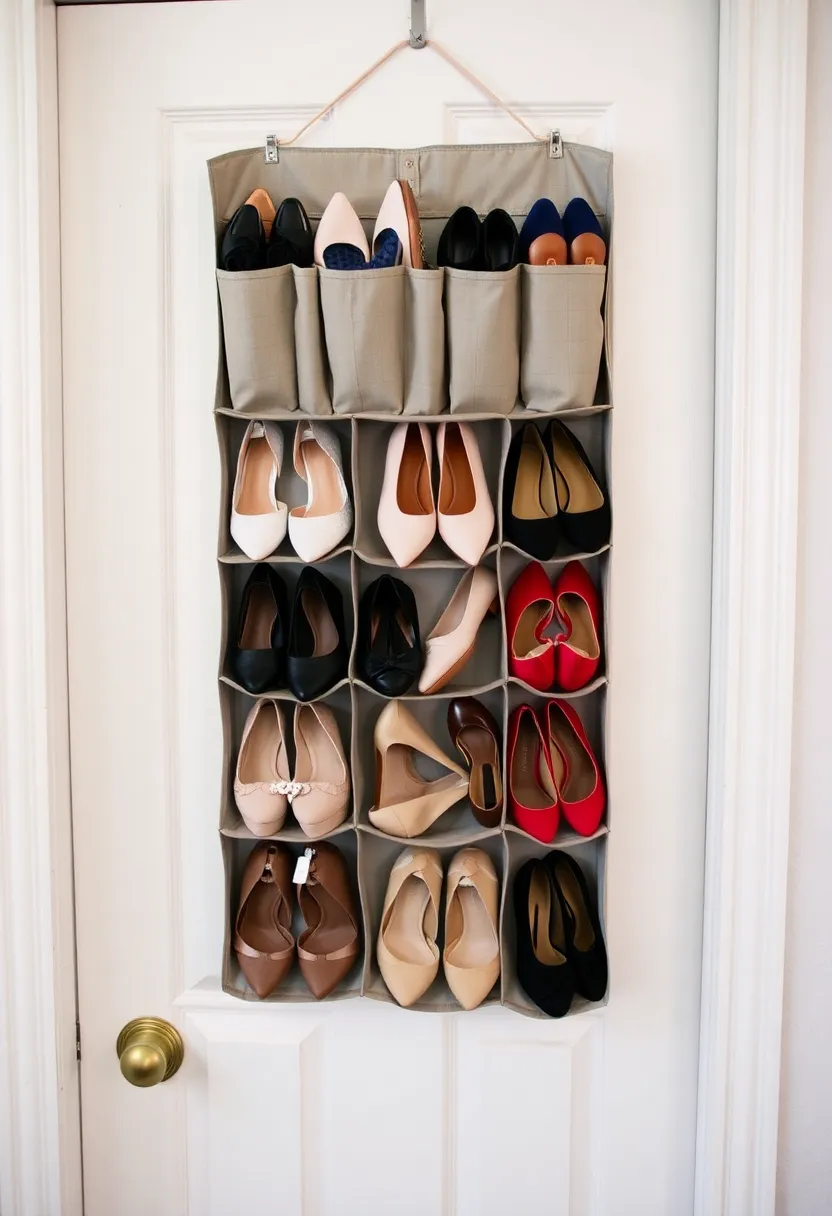
Say goodbye to messy shoe piles with hanging fabric organizers made just for shoes! These organizers help you maximize closet space while keeping your footwear visible and accessible. They can easily hang on the back of doors or in closets, making them a convenient option. Many home organization sites recommend these as a smart way to keep your shoes neat. Look for breathable fabrics to ensure your shoes stay fresh. Choose from a variety of styles, from chic neutrals to bold patterns, that match your decor. With these organizers, you’ll enjoy a tidy closet without sacrificing style. • Hang on doors for easy access
• Use breathable fabrics for freshness
• Choose from various styles to match decor
• Maximize closet space with vertical storage
Hanging fabric organizers can transform shoe storage into a stylish and organized solution.
Hanging Fabric Organizers for Shoes
Editor’s Choice

Whitmor Hanging Shoe Shelves – 8 Section – Closet Organizer – Grey
 Amazon$12.30
Amazon$12.30
Onlyeasy Sturdy Under Bed Shoe Storage Organizer, Set of 2, Fit 12 to 24…
 Amazon$15.19
Amazon$15.19
GORILLA GRIP Over the Door Shoe Organizer, 24 Large Breathable Mesh Pock…
 Amazon$15.99
Amazon$15.9911. Fabric Hammocks for Soft Storage
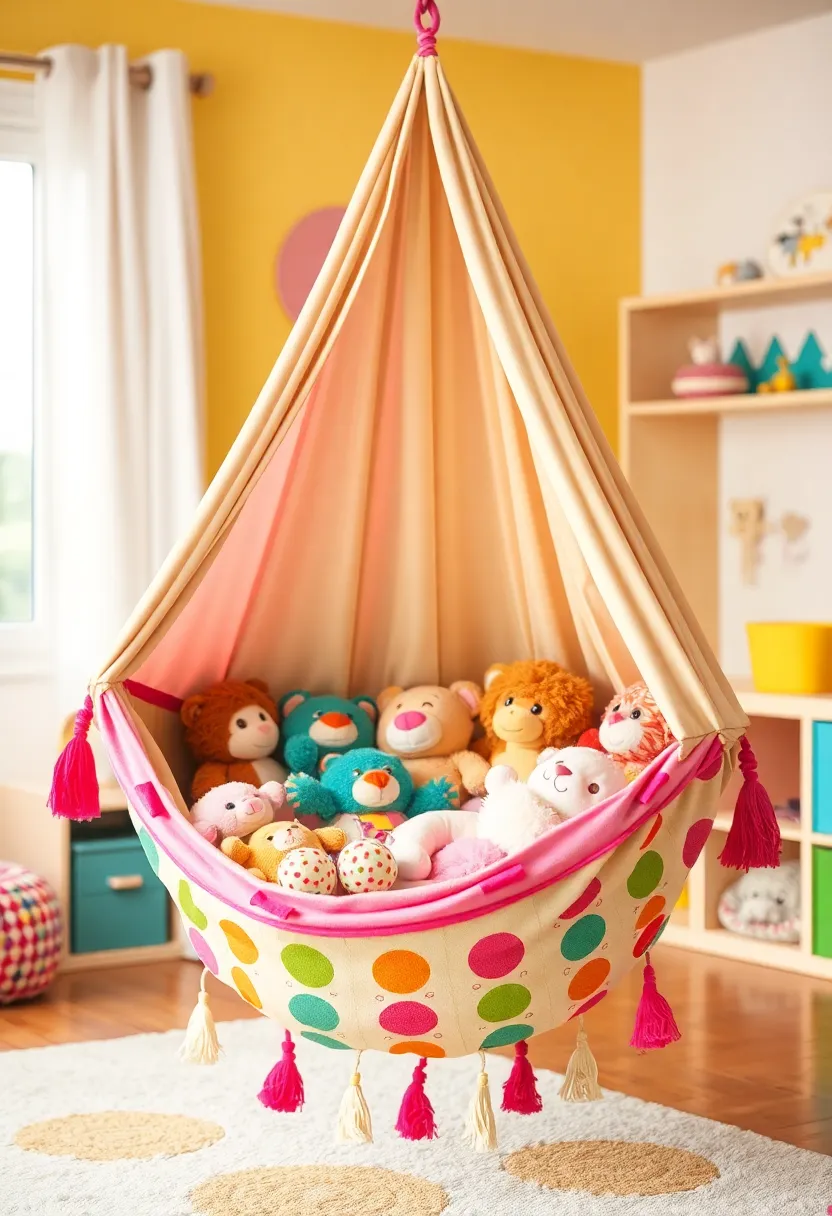
Bring a playful element into your home with fabric hammocks! These soft storage solutions are perfect for holding plush toys or blankets, adding a whimsical touch to any room. You can hang them in children’s rooms, living rooms, or even home gyms for easy access to your items. Many decor blogs highlight the charm of these hammocks as a fun way to stay organized. You can craft your own hammock from sustainable fabric, making it a unique addition to your decor. These space-saving options keep items off the floor while adding character to your space. With fabric hammocks, you can create a functional and fun storage solution. • Hang in children’s rooms for toys
• Use in living rooms for throw blankets
• Store fitness gear in home gyms
• Craft your own from sustainable fabrics
Fabric hammocks are a delightful way to keep your home organized while adding a playful touch.
Fabric Hammocks for Soft Storage
Editor’s Choice

Oversized Hammock Storage Bag Heavy Duty Hammock Cover – 62”L x 10”W -…
 Amazon$19.99
Amazon$19.99
PEASUG 100% Cotton Muslin Fabric, 63 Inch X 2 Yards Unbleached Muslin Li…
 Amazon$9.99
Amazon$9.9912. Under-Bed Fabric Storage Solutions
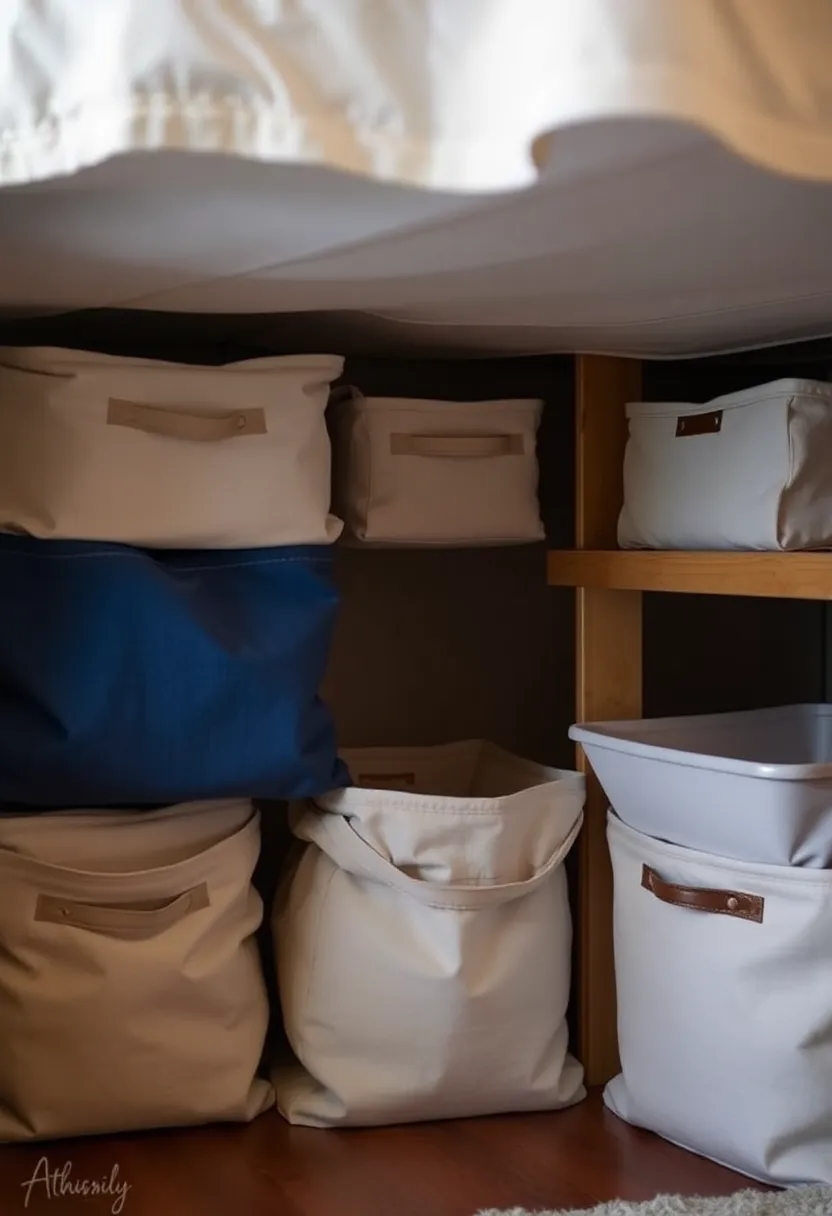
Make use of the often-ignored space under your bed with fabric storage solutions. This area is perfect for stashing away seasonal clothing or extra blankets. Look for sturdy fabric bags that fit neatly under your bed, or consider shallow fabric bins designed specifically for this purpose. Many home organization experts recommend this method for maximizing space. Roll-out drawers covered in fabric can also work, allowing for easy access to stored items. This approach not only saves space but also helps keep your bedroom tidy and organized. With under-bed storage, you can create a clutter-free environment effortlessly. • Use fabric bags for bulky items
• Choose shallow bins that fit under your bed
• Consider fabric-covered drawers for easy access
• Maximize under-bed space for organization
Under-bed fabric storage solutions offer an efficient way to keep your home looking neat.
Under-Bed Fabric Storage Solutions
Editor’s Choice

Amazon Basics Under Bed Fabric Zipper Blanket Storage Container Bags wit…
 Amazon$12.97
Amazon$12.97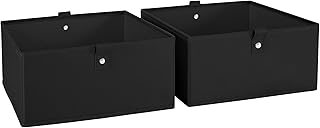
RiverRidge Home RiverRidge Kids 2pc 5″ Fabric Collapsible Storage Cube O…
 Amazon$8.54
Amazon$8.54
Under Bed Storage, 2 Pack Underbed Storage Container Bags With Lid, Fold…
 Amazon$27.99
Amazon$27.9913. Colorful Fabric Folders for Documents
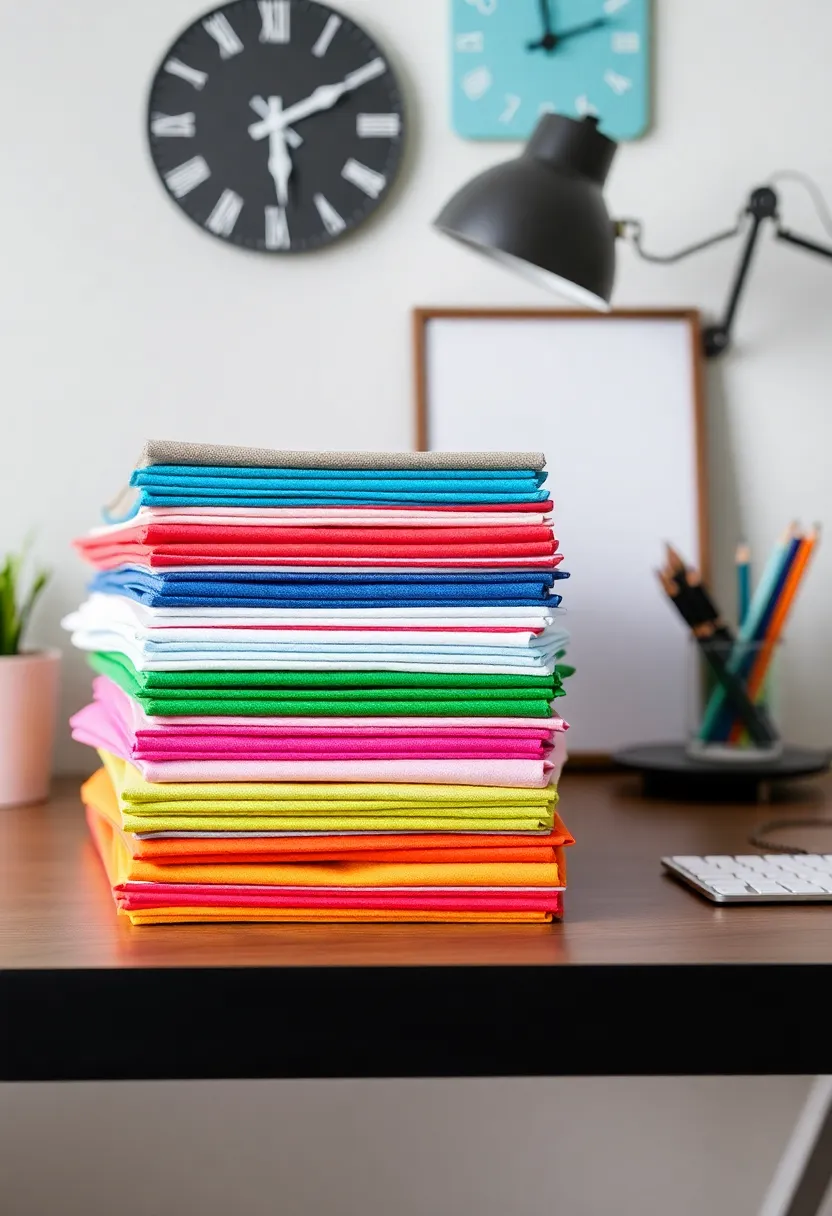
Organize your paperwork with colorful fabric folders that add a vibrant touch to your workspace. These stylish solutions make document storage easy and fun. Fabric folders are perfect for keeping important papers, schoolwork, or creative project materials neatly categorized. Many office supply retailers showcase these as essential items for a well-organized desk. Choose folders with lively prints or solid colors that match your personality. They are lightweight and portable, making them ideal for anyone on the go. With colorful fabric folders, you can bring style and order to your document management. • Store important papers in colorful folders
• Use for schoolwork to categorize subjects
• Keep project materials organized
• Select prints that reflect your style
Colorful fabric folders can help you keep your documents organized while adding a cheerful touch to your space.
Colorful Fabric Folders for Documents
Editor’s Choice

SUNEE File Folders, 18 Pack Manilla Folders 8.5 x 11, Colored Folder Off…
 Amazon$6.99
Amazon$6.9914. Quilted Fabric Storage Boxes
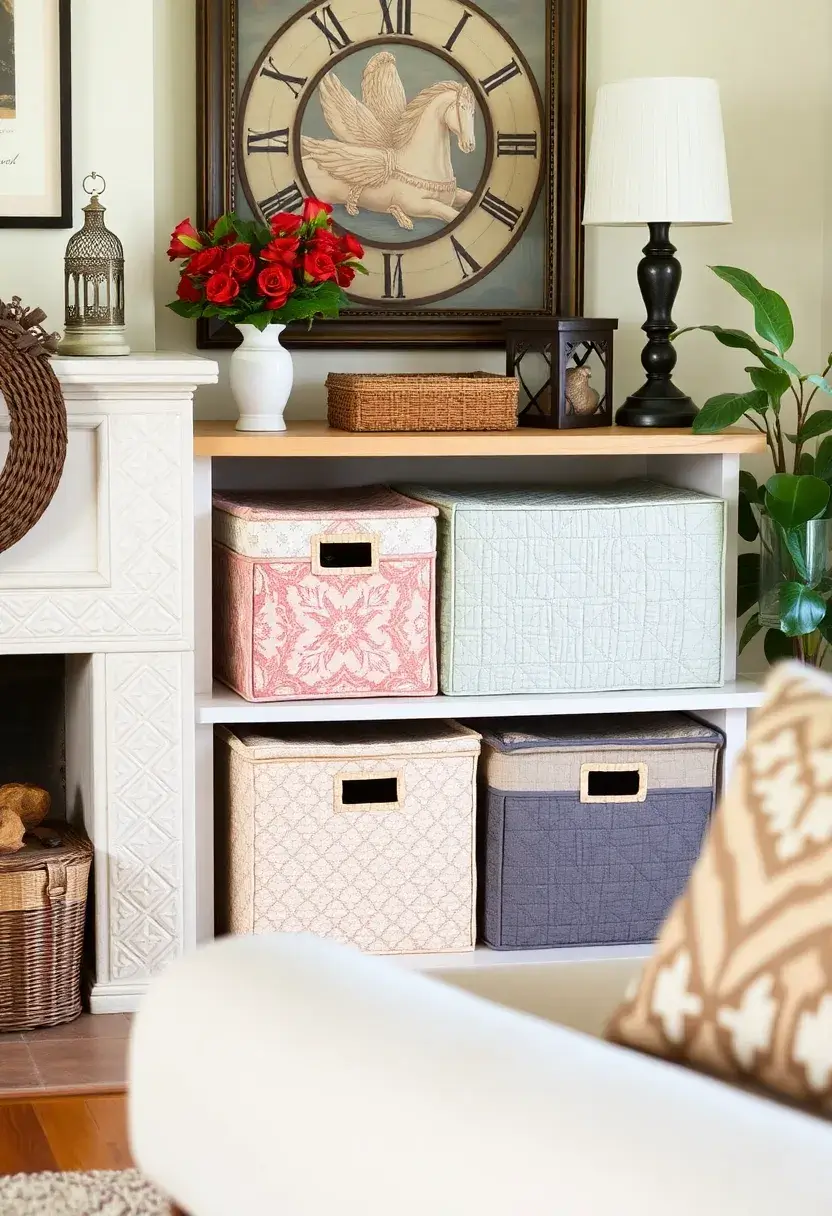
Quilted fabric storage boxes combine functionality with beauty, providing a cozy way to organize your belongings. These boxes add a warm touch to any room while keeping items secure. You can use them for seasonal decorations, children’s books, or comfort items like quilts and linens. Many lifestyle blogs emphasize the charm of these decorative storage solutions. Look for boxes in soft color palettes that complement your decor. They can serve as decorative pieces while providing essential storage. With quilted fabric boxes, you can enhance both organization and style in your home. • Store seasonal decorations in style
• Keep children’s books organized and accessible
• Use for quilts and linens for comfort
• Select soft colors that fit your theme
Quilted fabric storage boxes can elevate your home’s organization while adding a cozy feel.
Quilted Fabric Storage Boxes
Editor’s Choice

Amazon Basics Collapsible Fabric Storage Cubes Organizer with Handles, S…
 Amazon$17.29
Amazon$17.29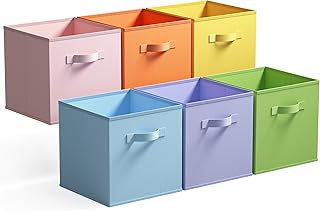
GRANNY SAYS 11 Inch Cube Storage Bins, Colorful Cube Storage Organizer, …
 Amazon$18.99
Amazon$18.99
Decorative Storage Boxes with Lids – Set of 2 Beautiful Fluted Cardboard…
 Amazon$26.99
Amazon$26.9915. Fabric Pet Storage Solutions
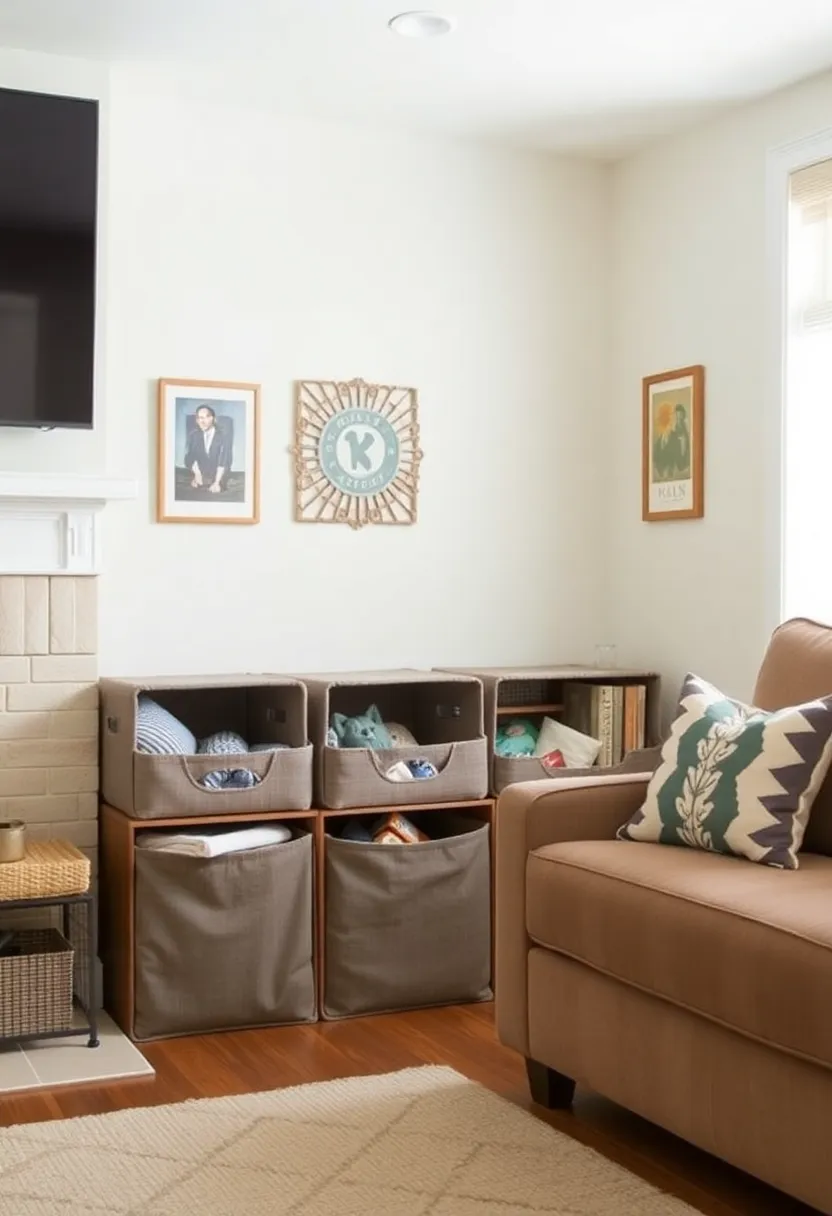
Don’t forget about your furry friends when organizing your home! Fabric storage solutions designed for pet items are practical and stylish. Consider using fabric containers to keep pet food organized or fun bins to store toys. You can also create a designated area with fabric hooks for leashes and collars. Many pet owners find that these solutions help maintain a tidy space while looking great. This approach keeps everything neat and easily accessible, allowing you to enjoy time with your pets without the clutter. Choosing stylish pet storage can harmonize with your home decor while ensuring functionality. • Use fabric containers for pet food
• Store toys in fun bins for easy access
• Create a designated area for leashes
• Keep everything neat and organized
Fabric pet storage solutions can help you keep your home organized while pampering your furry friends.
Fabric Pet Storage Solutions
Editor’s Choice

Amazon Basics Collapsible Fabric Storage Cubes Organizer with Handles, S…
 Amazon$17.29
Amazon$17.29
IRIS USA Dog Food Storage Container, 10 Pound, Airtight Seal and Buckle,…
 Amazon$14.99
Amazon$14.99
LOUHUA 10 Pieces 3 x 1 Inch Heavy Duty Nickel Plated Swivel Snap Hooks P…
 Amazon$9.99
Amazon$9.9916. Fabric Wrapped Furniture

Enhance your furniture with fabric wrapping to boost both organization and aesthetics. This stylish method allows you to hide clutter while adding a decorative element to your space. You can wrap chairs, tables, or stools with fabric that complements your decor. Many DIY enthusiasts share their fabric-wrapping projects online, showcasing the transformative effect. This approach not only elevates design but also creates a more organized environment. With fabric-wrapped furniture, you can achieve a beautiful balance between style and function. • Wrap chairs for added storage underneath
• Use tablecloths with pockets for magazines
• Create fabric-wrapped stools with hidden storage
• Elevate your decor with style
Fabric-wrapped furniture brings charm and order to your home.
Fabric Wrapped Furniture
Editor’s Choice

House2Home 60 Inch x 3 Yard Upholstery Black Cambric Dust Cover Fabric R…
 Amazon$11.79
Amazon$11.79
Rustic Faux Linen Square Tablecloth Farmhouse Water Resistant Mist Blue …
 Amazon$12.99
Amazon$12.99
SONGMICS MAZIE Collection – 30 Inches Folding Storage Ottoman Bench, Ott…
 Amazon$35.98
Amazon$35.9817. Soft Storage Baskets for Nursery

Create a cozy nursery with soft fabric storage baskets that are safe and stylish. These gentle options are perfect for storing baby essentials while enhancing the decor. Look for colorful toy baskets to keep toys organized, clothing bins for easy access, and cute baskets for soft blankets. Many parenting blogs highlight the need for functional yet stylish storage in nurseries. Choose eco-friendly materials that are safe for babies and easy to clean. With soft storage baskets, you can create a nurturing environment that is both functional and beautiful. • Use toy baskets for colorful organization
• Keep baby clothes organized in bins
• Store soft blankets in cute baskets
• Ensure eco-friendly materials for safety
Soft storage baskets can help you create a lovely nursery that is both organized and inviting.
Soft Storage Baskets for Nursery
Editor’s Choice

Fab totes Collapsible Storage Baskets for Shelves,14″x10″, 4 Pack Foldab…
 Amazon$14.99
Amazon$14.99
OIAHOMY Large Blanket Basket, 22”x17”x12” Rectangle Woven Baskets, Nurse…
 Amazon$24.99
Amazon$24.99
INDRESSME XXXLarge Cotton Rope Basket 21.7″ x 21.7″ x 13.8″ Woven Baby L…
 Amazon$20.39
Amazon$20.3918. Fabric Window Storage
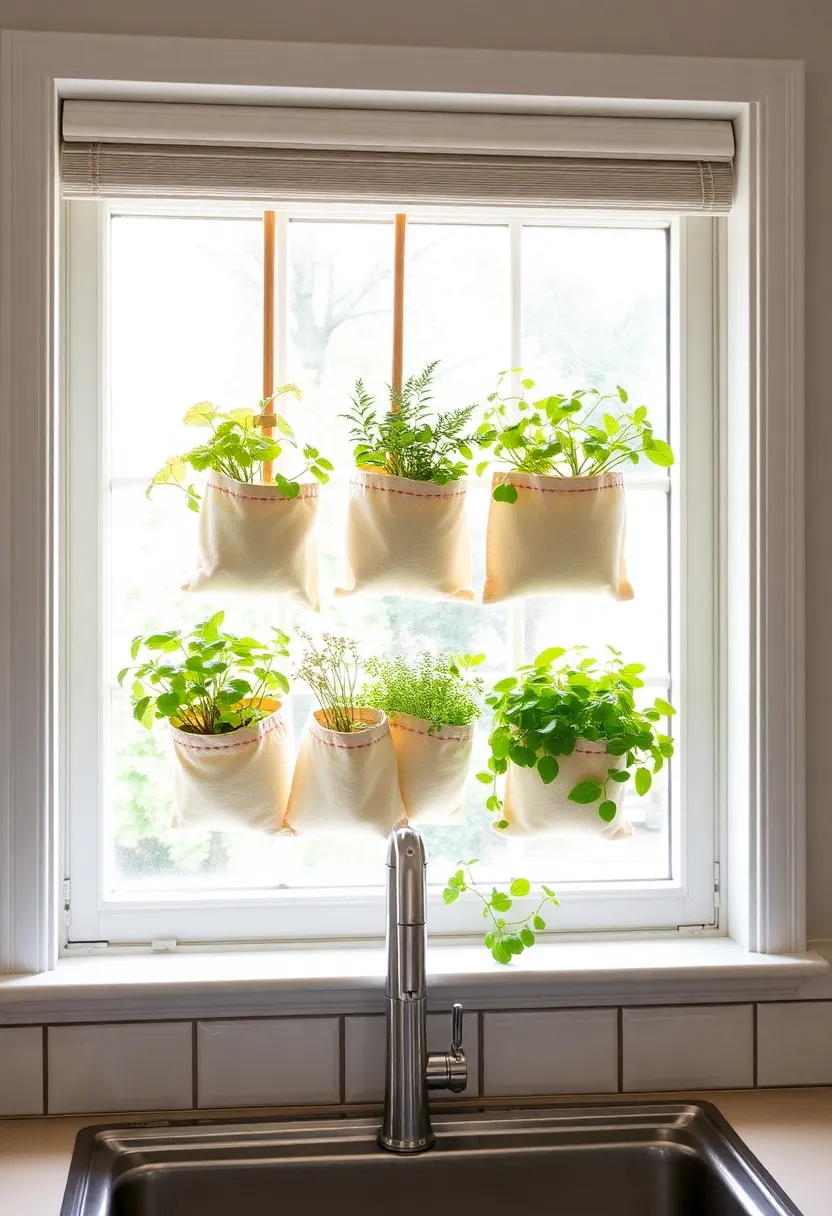
Get creative with window spaces using fabric storage solutions that add charm to any room. Hanging fabric bags or organizers can beautify window areas while serving practical purposes. Consider using fabric pockets for growing small herbs in the kitchen or hanging organizers to store sunglasses. Many creative home decorators share their unique takes on window storage ideas. This approach maximizes space and adds a touch of greenery and organization to your home. With fabric window storage, you can take advantage of every nook and cranny! • Grow herbs in fabric pockets by the kitchen window
• Hang organizers for sunglasses and accessories
• Store craft supplies in a craft room window
• Maximize space with charm and greenery
Fabric window storage solutions can enhance your home’s organization and aesthetics.
Fabric Window Storage
Editor’s Choice
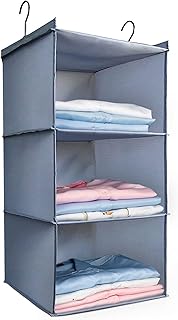
Hanging Closet Organizer and Storage 3-Shelf, Easy Mount Foldable Hangin…
 Amazon$9.99
Amazon$9.99
4 Tiered Window Plant Shelves Hanging Herb Planter Indoor Display with 1…
 Amazon$33.99
Amazon$33.99
ArtBin 6990SA Super Satchel Double Deep Compartment Box – Art Storage wi…
 Amazon$36.76
Amazon$36.7619. Fabric Closet Dividers
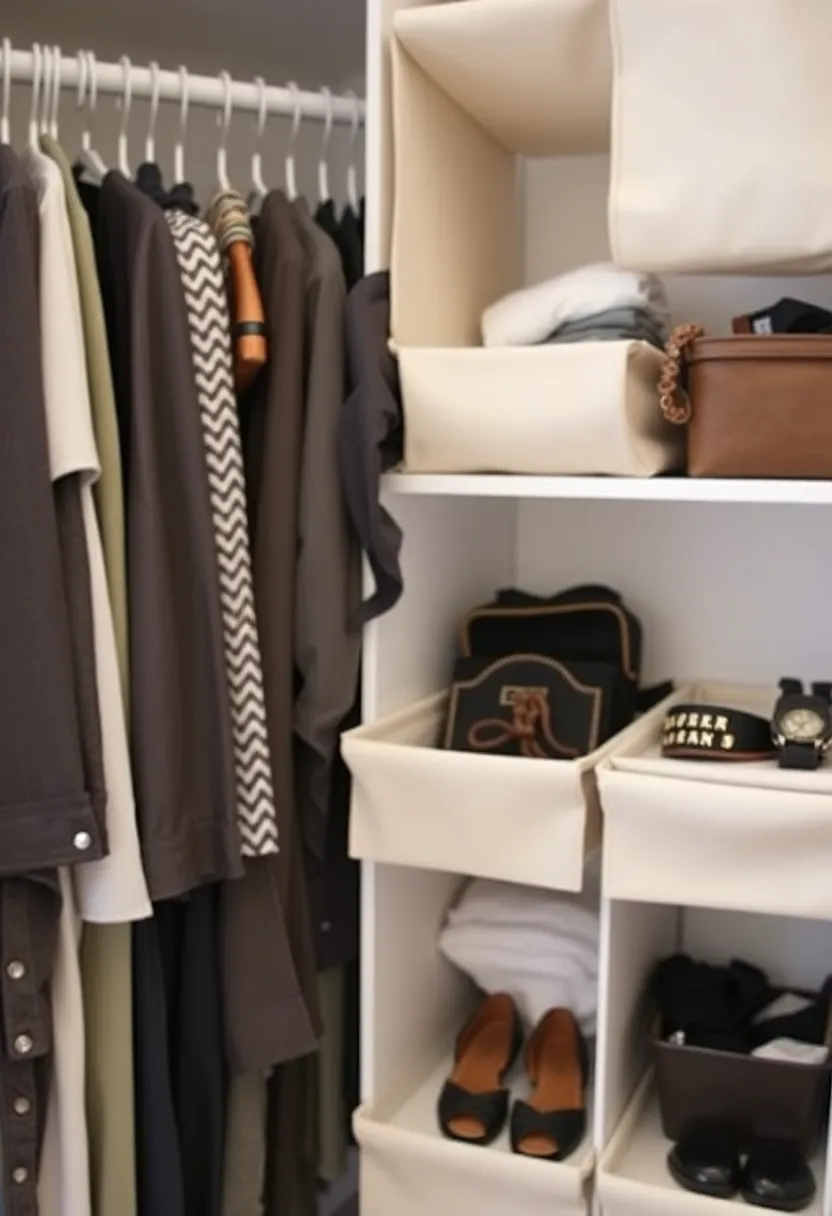
Make closet organization simple with fabric dividers! These handy tools help separate clothing items and accessories, adding a soft touch to your closet. Use fabric dividers to keep seasonal clothing neatly organized or to categorize scarves, belts, and bags. Many organization experts recommend these as a stylish way to maintain order in your closet. Choose dividers that complement your closet’s color scheme, creating a harmonious design. With fabric closet dividers, you can enjoy a well-organized setup that enhances your daily routine. • Keep seasonal clothing separated and tidy
• Organize accessories like scarves and belts
• Categorize kids’ clothes for easy access
• Select complementary colors for a stylish look
Fabric closet dividers help you streamline your organization while adding a touch of softness to your space.
Fabric Closet Dividers
Editor’s Choice

Maplefield 4-Pack Deep Fabric Shelf Dividers for Closet Organization & S…
 Amazon$25.42
Amazon$25.42
90 L Large Storage Bags, 6 Pack Clothes Storage Bins Foldable Closet Org…
 Amazon$18.68
Amazon$18.68
Plastic Drawer Storage with 5 Different Sizes Drawers, Clear Light Gray …
 Amazon$21.99
Amazon$21.9920. Fun Fabric Storage for Craft Rooms
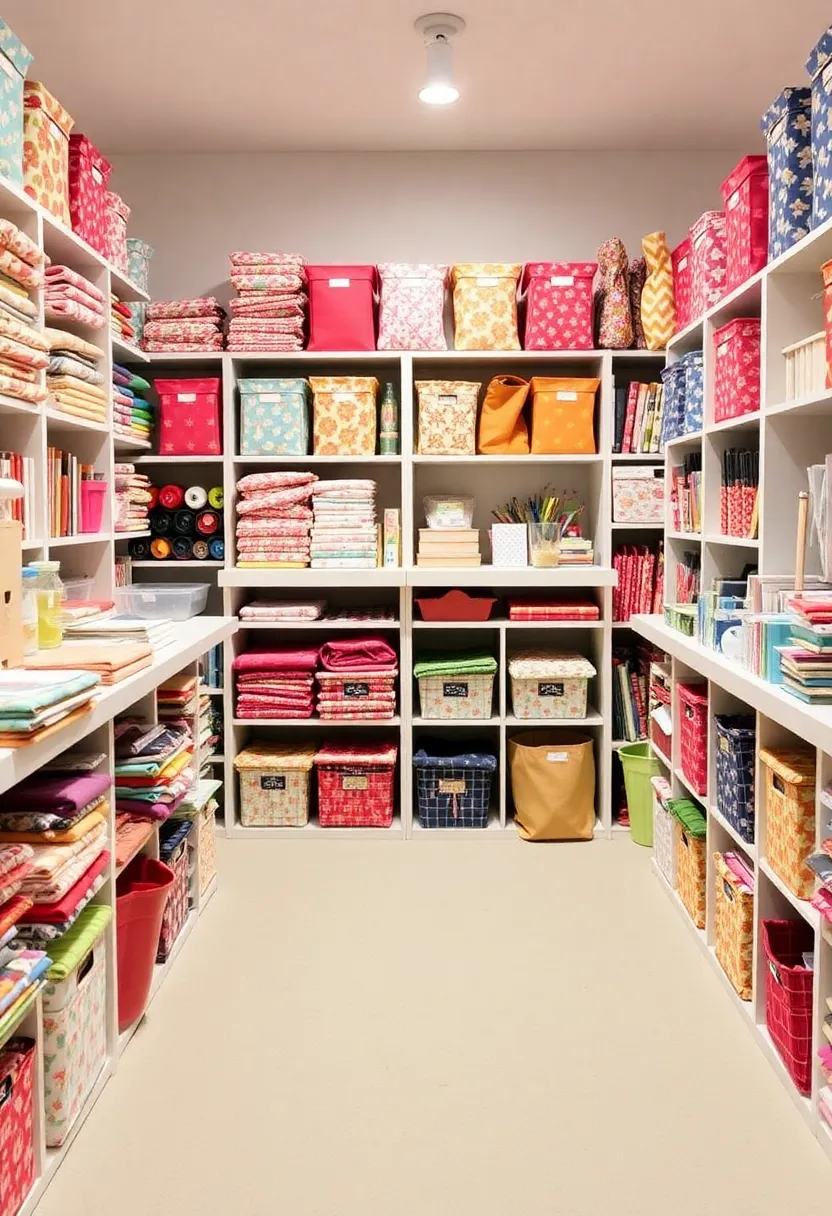
Keep your creativity flowing in your craft room with fun fabric storage solutions! Use colorful bins, baskets, and wall organizers to keep everything tidy and accessible. Many craft enthusiasts showcase their favorite storage ideas online, inspiring others with their organization hacks. Consider vibrant bins to store yarn, paper, and paints, along with fabric wall pockets for easy access to tools and supplies. Customized labels can help you categorize different materials, ensuring you find what you need quickly. With fun fabric storage, you can create an organized and inspiring workspace that fuels your creativity. • Use colorful bins for yarn and paper
• Hang fabric wall pockets for tools
• Create customized labels for organization
• Make your workspace inspiring and tidy
Fun fabric storage can elevate your craft room, helping you stay organized while enjoying your creative pursuits.
Fun Fabric Storage for Craft Rooms
Editor’s Choice

Amazon Basics Collapsible Fabric Storage Cubes Organizer with Handles, S…
 Amazon$17.29
Amazon$17.29
BOOMIBOO Hanging Closet Organize and Shelves,5-Hanging Shelf with 2 Side…
 Amazon$9.99
Amazon$9.9921. Fluffy Fabric Storage Poufs
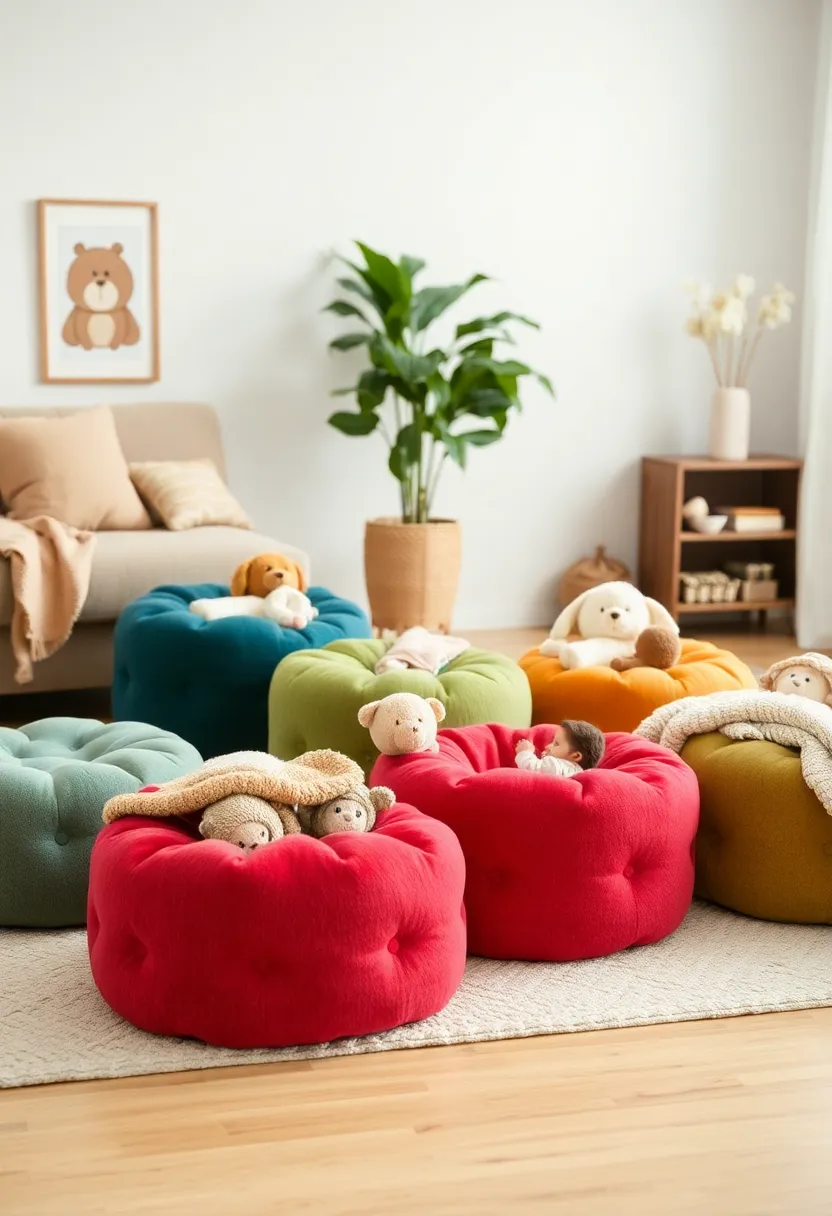
Combine comfort with organization through fluffy fabric poufs! These versatile pieces serve as both seating and storage, making them perfect for any living space. Use poufs to tuck away cozy blankets, keep kids’ toys organized, or provide extra seating for guests. Many home decor influencers highlight poufs as a stylish addition to any room. Look for poufs made from sustainable materials to promote eco-friendly living while adding a stylish touch. With fluffy fabric storage poufs, you can enjoy comfort and organization all in one. • Store cozy blankets inside for easy access
• Keep kids’ toys organized and within reach
• Provide extra seating for guests
• Choose sustainable materials for eco-friendliness
Fluffy fabric storage poufs can enhance your living space while adding comfort and style.
Fluffy Fabric Storage Poufs
Editor’s Choice

AELS Unstuffed Modern Pouf Cover for Living Room, Mid Century Modern Sto…
 Amazon$19.99
Amazon$19.99
Pouf Ottoman – Unstuffed Handmade Faux PU Leather Moroccan Style, Eco-Fr…
 Amazon$28.98
Amazon$28.98
Plush Multi-Functional Ottoman Pouf – Ergonomic Ottoman Foot Rest with S…
 Amazon$49.11
Amazon$49.1122. Chic Fabric Console Tables

Create stunning storage solutions with chic fabric console tables! These stylish pieces can double as organizers while enhancing your decor. Use them in entryways to store shoes, bags, or mail beneath, or place them in living rooms to keep books and magazines tidy. Many interior design blogs showcase console tables as elegant storage options. Choose fabrics that complement your home’s aesthetic, ensuring they blend seamlessly into your decor. With chic fabric console tables, you can enjoy both functionality and beauty in your living space. • Store shoes and bags in entryways
• Keep books and magazines organized
• Use in living rooms or home offices
• Select fabrics that match your decor
Chic fabric console tables can elevate your home’s organization while adding a touch of elegance.
Chic fabric console tables turn clutter into style—stash shoes, bags, and mail beneath with easy-to-reach fabric storage ideas. Choose fabrics that blend with your decor, and add labeled baskets for quick, practical organizing in entryways or living rooms.
Chic Fabric Console Tables
Editor’s Choice

HOOBRO 29.5″ Narrow Console Table with 2 Fabric Drawers, Sofa Table, Sma…
 Amazon$40.99
Amazon$40.99
4 Pack Storage Baskets for Organizing, Woven Baskets for Shelves – Perfe…
 Amazon$33.99
Amazon$33.9923. Portable Fabric Storage Carts

Maximize flexibility with portable fabric storage carts! These handy solutions keep items organized and are easily movable from room to room. Use them in craft rooms to store supplies or in kitchens to keep cooking essentials handy. Many home organization experts recommend these carts for their versatility. Choose carts made from eco-friendly materials to ensure style and sustainability go hand in hand. With portable fabric storage carts, you can enjoy a functional and stylish way to stay organized. • Use in craft rooms for easy access to supplies
• Keep kitchen essentials organized and accessible
• Move paperwork and supplies as needed
• Opt for eco-friendly materials for sustainability
Portable fabric storage carts can help you create an organized and flexible environment at home.
Portable Fabric Storage Carts
Editor’s Choice

4 Drawer Storage Organizer ? Rolling Fabric Bin Storage Cart with Wheels…
 Amazon$28.48
Amazon$28.48
Storage Baskets, 15.7 Inch Woven Fabric Bins, Storage Cubes with Reinfor…
 Amazon$22.99
Amazon$22.99
YASONIC 3 Tier Rolling Cart – Metal Utility Cart with Wheels, Hanging Cu…
 Amazon$28.47
Amazon$28.4724. Decorative Fabric Trays

Add a touch of elegance to your storage with decorative fabric trays! These trays are perfect for holding small items while adding style to any surface. Use them to organize jewelry, office supplies, or even living room decor like coasters and candles. Many interior design magazines highlight decorative trays as essential for stylish organization. Choose fabric trays that complement your home decor, ensuring they’re both functional and fashionable. With decorative fabric trays, you can keep your items neatly arranged while enhancing your space. • Organize jewelry to prevent tangles
• Store office supplies for easy access
• Arrange living room decor neatly
• Select fabrics that enhance your decor
Decorative fabric trays can elevate your home’s organization while adding a stylish flair.
Decorative Fabric Trays
Editor’s Choice

Household Essentials Grey 725-1 Deep Drawer Organizer Box for Storage | …
 Amazon$12.29
Amazon$12.29
Travel Jewelry Case Organizer Bag, Soft Padded Jewelry Carrying Pouch Po…
 Amazon$24.99
Amazon$24.99
Marbrasse Expandable Desk Drawer Organizer, Mesh Drawer Organizer Tray w…
 Amazon$20.99
Amazon$20.9925. Eco-Friendly Fabric Waste Baskets
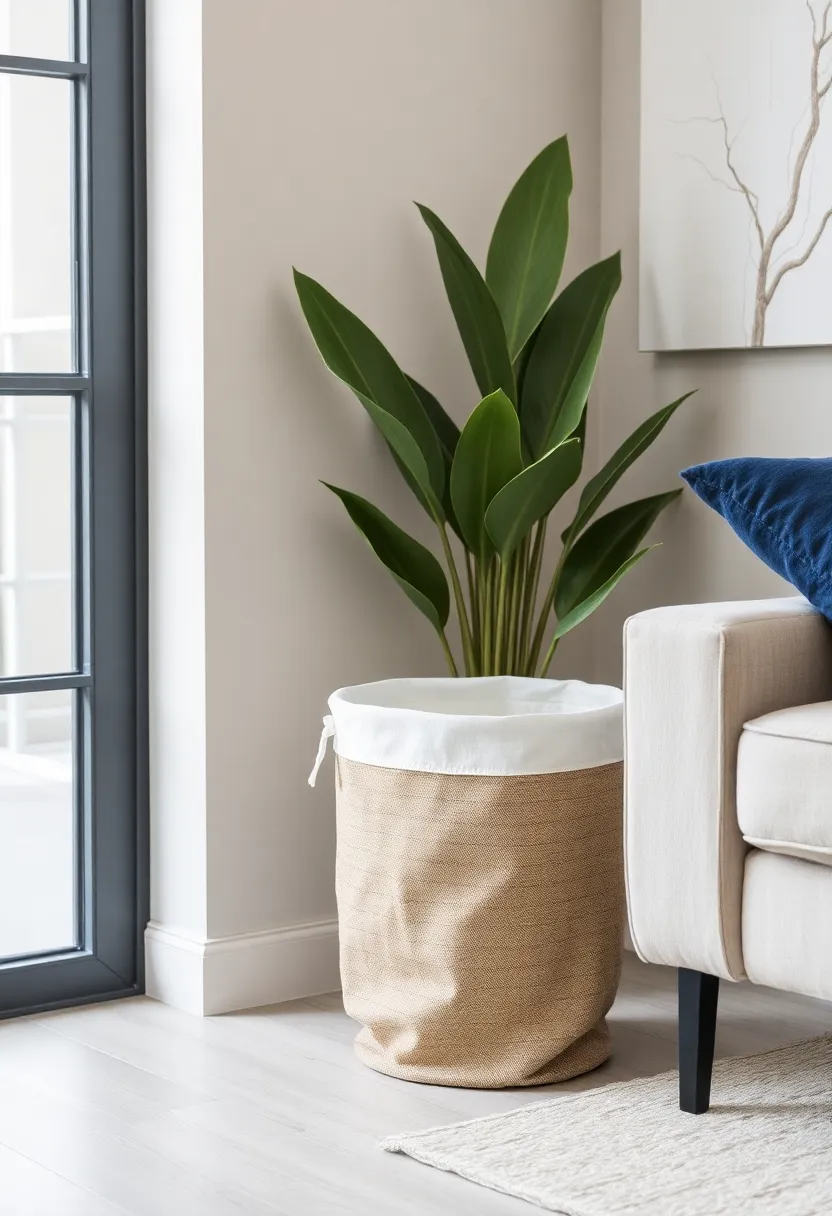
Say goodbye to boring waste bins! Eco-friendly fabric waste baskets offer a stylish alternative to traditional options. Use them in living areas to keep paper and other waste organized without sacrificing decor. Many eco-conscious bloggers recommend these bins for their functionality and design. Choose fun and colorful options that encourage kids to recycle, teaching them good habits while keeping their rooms tidy. With eco-friendly fabric waste baskets, you can maintain a stylish look while promoting sustainable practices. • Use in living areas for organized waste
• Select chic designs that match your decor
• Opt for colorful bins for kids’ rooms
• Enhance your eco-friendly practices with style
Eco-friendly fabric waste baskets can help you organize without compromising on design.
Eco-Friendly Fabric Waste Baskets
Editor’s Choice

Fern Trail 3.3 Gallon Waste Basket | Small Decorative Block Printed Tras…
 Amazon$29.99
Amazon$29.99
ShellKingdom Foldable Fabric Storage Cubes And Cloth Organizer Drawer Fo…
 Amazon$19.99
Amazon$19.99
UUJOLY Small Trash Can Wastebasket Garbage Can Container Bins for Bathro…
 Amazon$12.99
Amazon$12.9926. Fabric-Wrapped Food Storage Bins
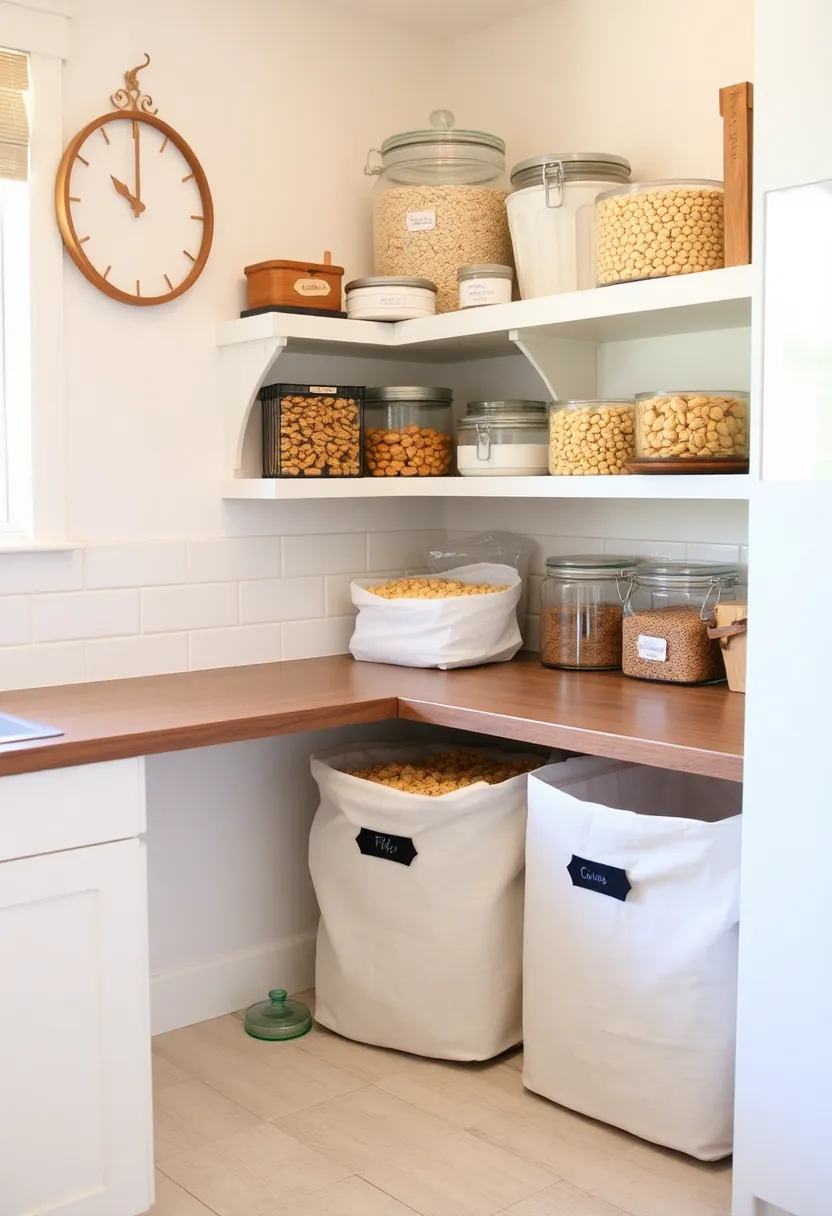
Upgrade your kitchen organization with fabric-wrapped food storage bins! These charming solutions make food preservation stylish and practical. Use them for snack storage, grains, or baking supplies, keeping everything neat and appealing. Many culinary blogs highlight these bins as a key component of a well-organized kitchen. Look for fabric options that protect your food while complementing your kitchen decor. With fabric-wrapped food storage bins, you can enjoy both functionality and beauty in your cooking space. • Keep snacks organized for easy access
• Store grains and pasta in attractive containers
• Organize baking supplies stylishly
• Choose fabrics that match your kitchen
Fabric-wrapped food storage bins can enhance your kitchen’s organization and aesthetics.
Fabric-Wrapped Food Storage Bins
Editor’s Choice

Pekky 13 L Food Service Bus Tubs with Lids, 3 Packs Commercial Tote Box,…
 Amazon$30.99
Amazon$30.99
Reusable Snack Containers with Lids 20Pcs,New Snack Containers,Snackle B…
 Amazon$7.99
Amazon$7.99
Amazon Basics Collapsible Fabric Storage Cubes Organizer with Handles, S…
 Amazon$17.29
Amazon$17.2927. Soft Fabric Pet Beds with Storage

Combine comfort and functionality with soft fabric pet beds that include storage! These designs pamper your furry friends while keeping their items organized. Use them to store toys, extra blankets, or pet supplies like leashes and collars. Many pet owners find these beds to be both practical and stylish. Choose eco-friendly fabrics that are safe for pets and easy to clean. With soft fabric pet beds, you can create a cozy spot for your pets while maintaining a tidy environment. • Keep toys hidden yet accessible
• Store blankets for your pet to snuggle in
• Organize leashes and accessories neatly
• Opt for eco-friendly materials for safety
Soft fabric pet beds with storage can enhance your home while providing comfort for your furry friends.
Soft Fabric Pet Beds with Storage
Editor’s Choice

Small Dog Bed with Hidden Storage,3″ Foam Pet Couch for Puppies and Smal…
 Amazon$133.79
Amazon$133.79
Dog Toy Basket Small Gift Basket for Baby, Woven Storage Baskets for Dog…
 Amazon$9.99
Amazon$9.9928. Personalized Fabric Storage Labels
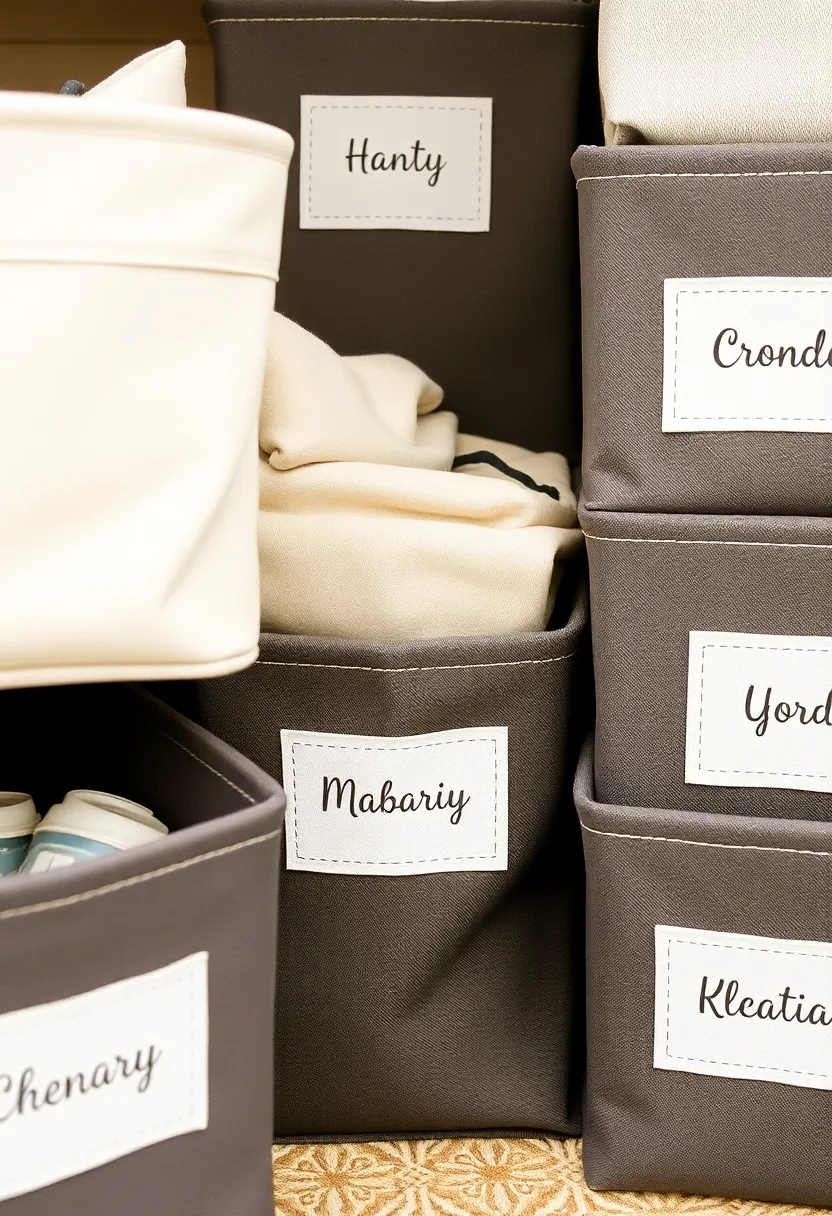
Take your organization to the next level with personalized fabric storage labels! These charming additions not only enhance decor but also improve accessibility. Use them for baskets and boxes to easily identify stored items, or tag clothing divisions in closets for quick access. Many DIY enthusiasts enjoy creating custom labels that match their home style. Get creative with fonts and colors that reflect your personality, adding a personal touch to your organized spaces. With personalized fabric storage labels, you can make your organization both stylish and efficient. • Label baskets for easy identification
• Tag boxes for seasonal decorations
• Organize closets for quick access
• Create custom designs that fit your style
Personalized fabric storage labels can elevate your organization while adding a unique flair.
Personalized Fabric Storage Labels
Editor’s Choice

30-200pcs Custom Satin Clothing Sewing Labels,Personalised Wash Care Tag…
 Amazon$5.99
Amazon$5.99
Brother P-Touch PTD220 Home/Office Everyday Label Maker | Prints TZe Lab…
 Amazon$44.99
Amazon$44.99
4 Pack Large Closet Storage Baskets Bins for Shelves | Fabric Closet Org…
 Amazon$19.99
Amazon$19.9929. Cozy Fabric Chair Cushions with Storage

Combine comfort and storage with cozy fabric chair cushions that provide hidden storage! These cushions add style to any seating arrangement while helping to declutter. Use them to keep kids’ toys tucked away, store extra throws for chilly evenings, or hide away favorite books within easy reach. Many home decor enthusiasts love these cushions for their practicality. Choose fabrics that complement your decor and create an inviting atmosphere. With cozy fabric chair cushions, you can enhance both comfort and organization in your living space. • Keep toys tucked away for neatness
• Store throws for cozy evenings
• Hide books within easy reach
• Select fabrics that match your decor
Cozy fabric chair cushions with storage can help create a comfortable and organized home.
❝ Cozy Fabric Chair Cushions with Hidden Storage turn seating into smart storage—perfect for busy homes. Tuck away toys, extra throws, or favorite books in seconds, then enjoy a calmer, clutter-free room. It’s practical, stylish, and a simple step toward better fabric storage ideas. ❞
Cozy Fabric Chair Cushions with Storage
Editor’s Choice
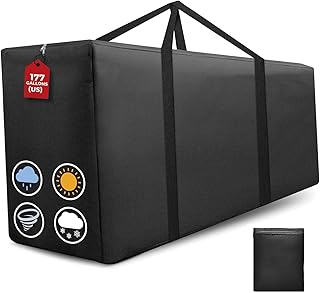
Extra Large Patio Outdoor Cushion Storage Bag Waterproof 68″ L x 30″ W x…
 Amazon$26.99
Amazon$26.99
Storage Bins, 3-Pack Large Storage Box with Rope Handles, Collapsible St…
 Amazon$11.99
Amazon$11.9930. Stylish Fabric Storage Under Stairs
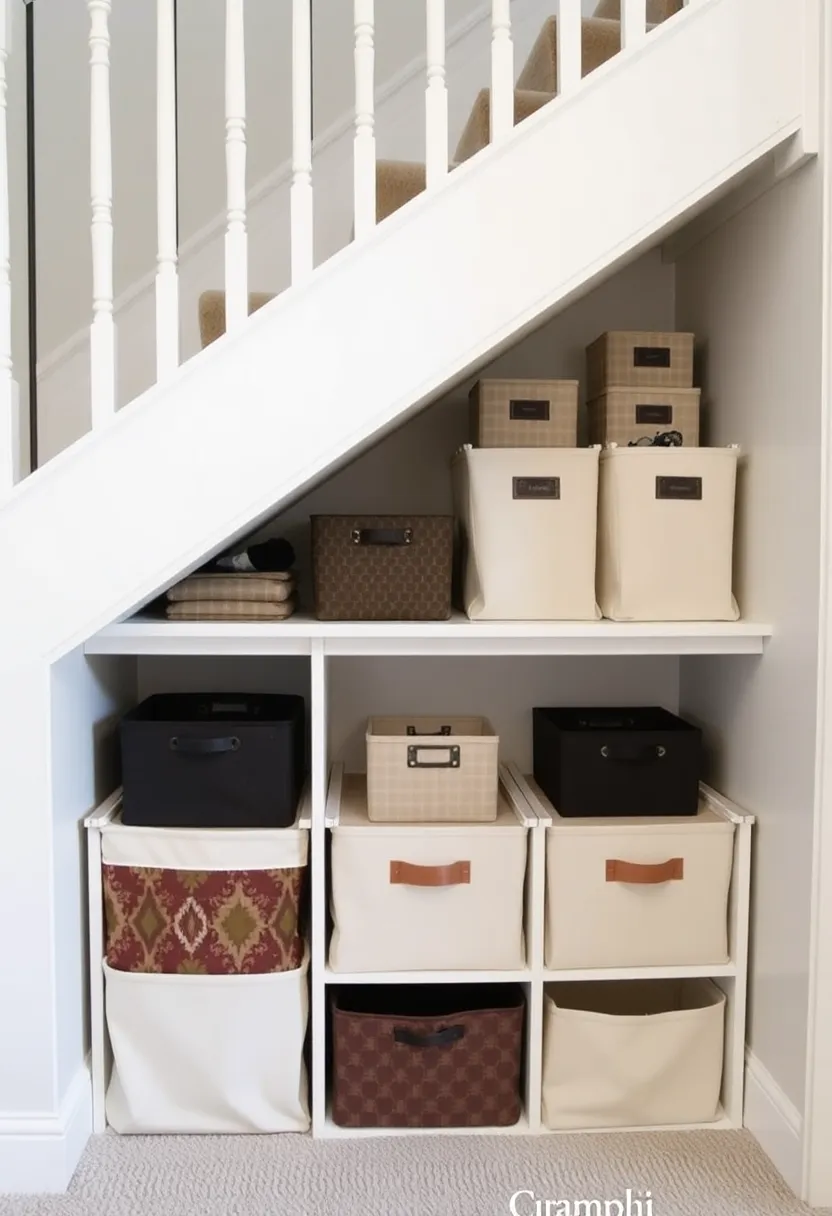
Make the most of those awkward under-stair spaces with stylish fabric storage solutions! This often-overlooked area can become a functional storage haven. Use hanging organizers for shoes or tools, fabric bins for extra linens, or create custom solutions tailored to your needs. Many home organization experts recommend utilizing under-stair spaces for maximum efficiency. This approach not only maximizes space but also adds a unique design element to your home. With stylish fabric storage under stairs, you can keep your home organized while enhancing its beauty. • Hang organizers for shoes and tools
• Use fabric bins for linens or seasonal items
• Create custom solutions for unique needs
• Maximize space and style in your home
Stylish fabric storage under stairs can transform unused areas into practical and beautiful spaces.
Stylish Fabric Storage Under Stairs
Editor’s Choice

SpaceAid Shoe Organizer for Closet, 2 Pack Foldable Shoe Storage Contain…
 Amazon$29.99
Amazon$29.99
Criusia Storage Cubes – 11 Inch Heavy Duty Fabric Closet Bins for Shelve…
 Amazon$20.99
Amazon$20.99
CRAFTSMAN Storage Organizer, 30 Small Drawer Modular Storage System, Eas…
 Amazon$26.98
Amazon$26.98Conclusion
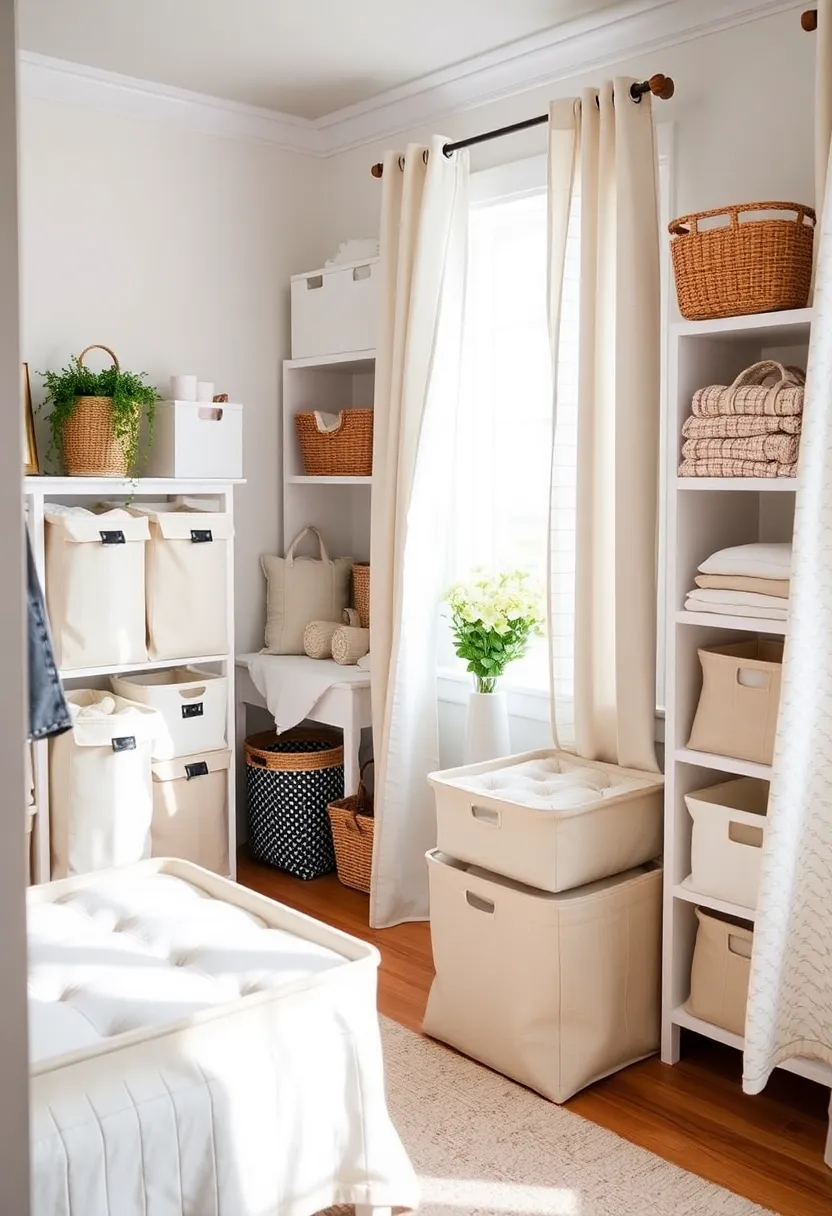
Incorporating fabric storage ideas into your home is an excellent way to enhance organization while maintaining a chic aesthetic. From fabric bins to creative DIY solutions, the possibilities are endless.
Not only do these ideas promote a clutter-free environment, but they also encourage eco-friendly practices, making your home a more sustainable refuge. Embrace these stylish storage solutions, and watch your home transform into an organized paradise!
Note: We aim to provide accurate product links, but some may occasionally expire or become unavailable. If this happens, please search directly on Amazon for the product or a suitable alternative.
This post contains Amazon affiliate links, meaning we may earn a small commission if you purchase through our links, at no extra cost to you.
Frequently Asked Questions
What Are Some Creative Fabric Storage Ideas for Small Spaces?
If you’re short on space, don’t worry! There are plenty of creative fabric storage ideas that can help you maximize your area. Consider using vertical space by installing shelves or hanging fabric storage bins on the walls.
Utilizing under-bed storage boxes is another great option. You can also repurpose items like decorative baskets or vintage suitcases for chic and functional storage solutions. Remember, the key is to keep it organized while still looking stylish!
How Can I Choose Eco-Friendly Fabric Storage Solutions?
Choosing eco-friendly fabric storage solutions is easier than you think! Look for products made from sustainable materials like organic cotton, recycled polyester, or bamboo. Fabric storage bins that are biodegradable or made from upcycled materials are also fantastic options.
Additionally, consider DIY projects where you can repurpose old clothing or fabric scraps into unique storage solutions. Not only will you be helping the planet, but you’ll also create one-of-a-kind chic home accessories.
What Are Some Stylish Storage Solutions for Fabrics That Blend with Home Decor?
Integrating stylish storage solutions for fabrics into your home decor can enhance your space beautifully! Try using decorative baskets, fabric cubes, or fabric-covered boxes that match your color scheme.
Open shelving can display vibrant fabric rolls as art pieces, while vintage trunks can serve as both storage and a unique focal point. Remember, the goal is to keep your home organized while ensuring that your storage solutions are visually appealing!
How Do I Implement Decluttering Ideas for Fabric Storage?
Decluttering your fabric storage can be a refreshing process! Start by categorizing your fabrics – keep like with like, such as cottons, linens, and knits. Then, assess each piece: if you haven’t used it in a year, consider donating or repurposing it.
Utilize home organization tips like folding techniques or rolling fabrics to save space. Implementing clear bins or labeled containers can also help you easily find what you need while maintaining a tidy area.
What Are Some Tips for Maintaining Organized Fabric Storage Long-Term?
To maintain organized fabric storage over the long term, establish a routine of regularly reviewing and reorganizing your fabrics. Create a dedicated space specifically for fabric storage, using chic home accessories that inspire you to keep your area tidy.
Utilize clear containers or labels to track your inventory, and always return fabrics to their designated spots after use. This way, your fabric collection remains organized, making it easier to find what you need when inspiration strikes!
Related Topics
fabric storage ideas
eco-friendly storage
home organization tips
chic home accessories
stylish storage solutions
decluttering ideas
minimalist design
DIY fabric bins
sustainable living
space-saving techniques
budget friendly decor
beginner friendly







